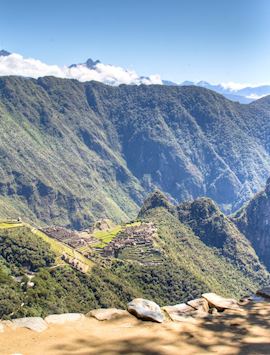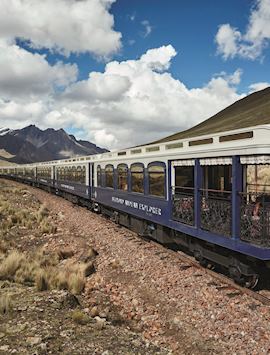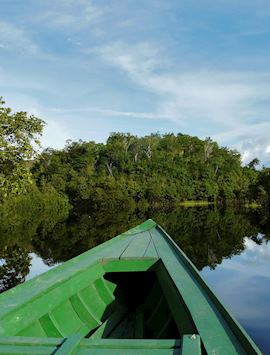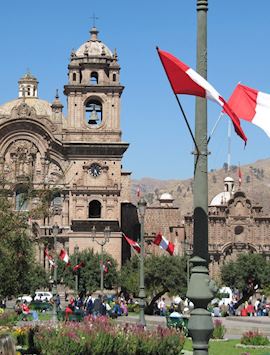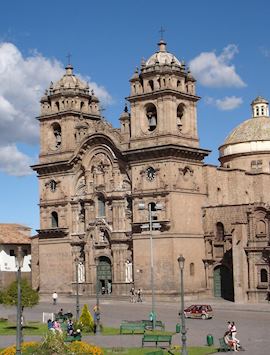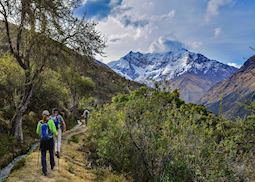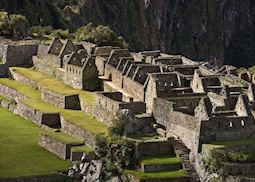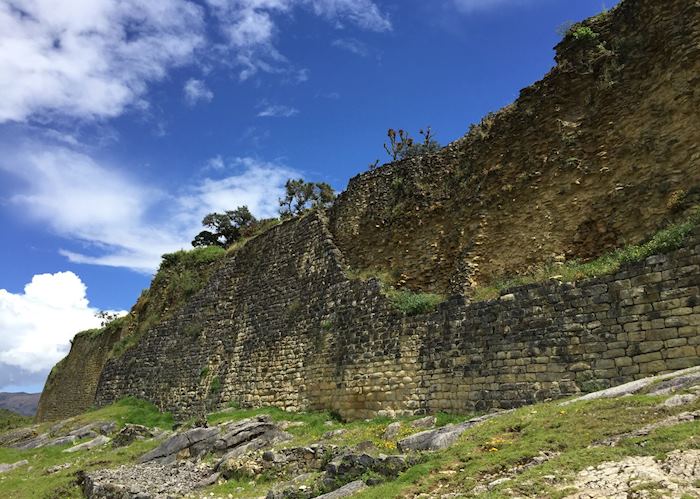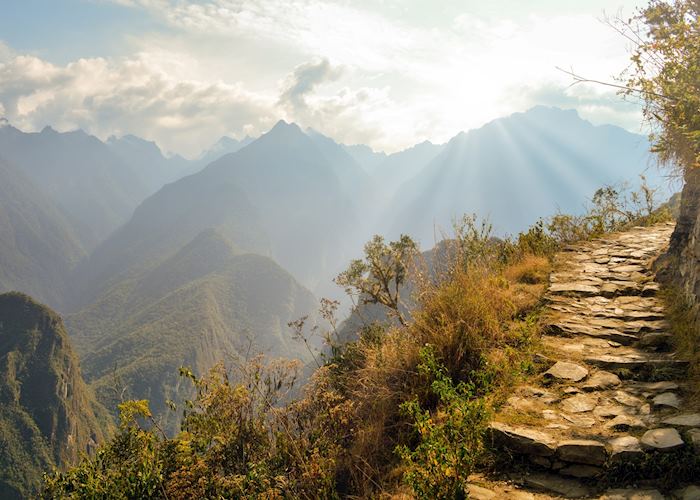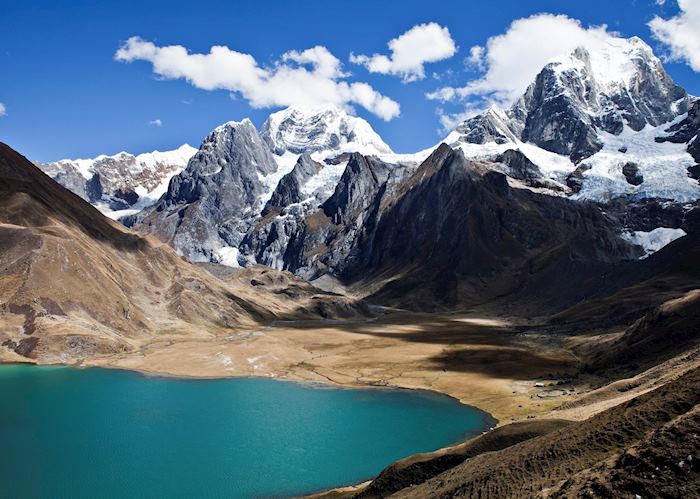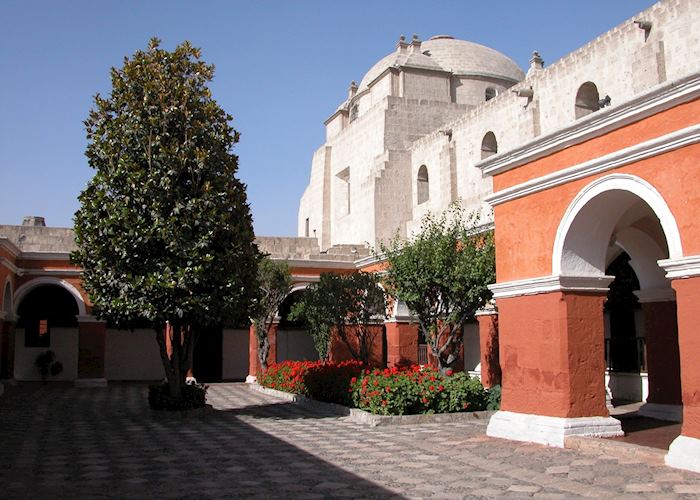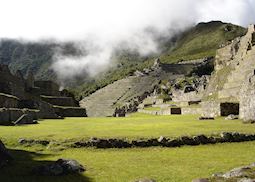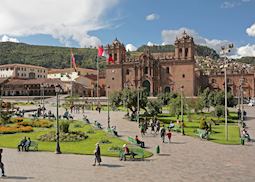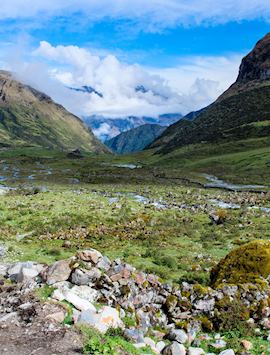
Heartland of the Incas, Peru is still littered with sites that showcase this powerful empire’s prowess as master builders, most notably Machu Picchu. Visiting this citadel hidden in the mountains is inspiration enough for a first-time visit, but the Incas were just one in a long line of peoples with a surviving legacy to explore. The landscape is equally varied: from the heights of the Andes down to the rainforest and quieter tributaries of the Peruvian Amazon. Peru feels like a country on the ascendency, reflected in the quality of hotels and a penchant for fine food.
Despite being a country of classic journeys, not every holiday to Peru has to follow the same paths. Our specialists have explored the main sights and the lesser known ones. They’ll carefully plan your holiday as an individual tailor-made trip to match your preferences.
Suggested tours for Peru
Hiking to the ruined citadel of Machu Picchu, cruising along the tributaries of the Amazon, and exploring the vibrant markets of the Sacred Valley — our suggested itineraries are a great starting point as you begin to plan your trip to Peru.
Suggested activities for Peru
Enjoy a guided walk around Machu Picchu, hike the KM 104 Trail through the Andes, or explore the market and Inca ruins in the small village of Písac. Whatever your interests, our specialists will suggest experiences designed to enhance your trip to Peru.
-
Day hike to Machu Picchu ![Hiking on the Salkantay Trek]()
Day hike to Machu Picchu
Machu PicchuDay hike to Machu Picchu
A trek (KM 104 Trail) from the Sacred Valley to Machu Picchu, arriving at the Inti Punku Sun Gate for an unforgettable view of Machu Picchu.
View details -
Ride the Andean Explorer ![Belmond Andean Explorer Sleeper Train - Dining Cart]()
Ride the Andean Explorer
PunoRide the Andean Explorer
Puno is the place to board the Andean Explorer train to Cuzco. This spectacular rail journey, on a comfortable train with restaurant, bar and viewing carriage, takes about 10 hours.
View details -
Tour of Machu Picchu ![Machu Picchu]()
Tour of Machu Picchu
Machu PicchuTour of Machu Picchu
Your tour of Machu Picchu will incorporate the Temple of the Sun, the Royal Tomb and the Intihuatana.
View details
Why travel with Audley?
- 100% tailor-made tours
- Fully protected travel
- Established for over 25 years
- 98% of our clients would recommend us
Best time to visit
Our specialists advise on the best months to visit Peru, including information about climate, events and festivals.
Request our brochure
Covering all seven continents, The World Your Way shows you how you can see the world with us. It features trip ideas from our specialists alongside hand-picked stays and experiences, and introduces our approach to creating meaningful travel experiences.

Useful information for planning your holiday in Peru
Peru’s official language is Spanish, but many Indigenous communities in the highlands still speak the ancient languages of Quechua and Aymara. You’ll find English speakers in the main visitor destinations and in most hotels.
The Peruvian currency is the nuevo sol (S/ or PEN). You’ll find ATMs in cities and larger towns, and credit cards are widely accepted, though Visa and Amex are preferred to Mastercard. Change is always in short supply so use larger denominations in cities and keep smaller bills for rural areas.
In Peru you should try ceviche (fish marinated in lemon juice and hot peppers), causa (potato casserole), and lomo saltodo (stir-fried beef). Seafood is popular in coastal areas, and in the highlands most dishes are based around corn and potatoes. Cuy (roasted guinea pig) is an Altiplano delicacy.
In the highlands, you might also be offered tea made from an infusion of coca leaves, which can help alleviate the effects of altitude sickness, while Peru’s most renowned drink is pisco, a white grape brandy.
A tip of around 10% is acceptable for good service in a restaurant in Peru. Guides and drivers will also appreciate a tip and your country specialist can offer advice on appropriate amounts.
For the latest travel advice for Peru, including entry requirements, health information, and the safety and security situation, please refer to the Foreign, Commonwealth & Development Office website.
In Peru, you can explore the lost city of Machu Picchu, visit the floating islands on Lake Titicaca, watch condors soar over the Colca Canyon, or venture into the Amazon. Although Machu Picchu is the most renowned of Peru’s archaeological sites, the country is littered with the remains of other ancient cultures including walled citadels, pyramids of the Lambayeque people, and the gold-laden tombs of the Moche culture.
If you’d prefer something more active, you can go white-water rafting down canyons, mountain biking in the Sacred Valley, or take a trip into the Peruvian Amazon to canoe along waterways to the soundtrack of monkeys’ howls and whoops. In the towns and cities, you can visit traditional markets, explore Inca temples and Catholic convents, and get an insight into Peru’s rich culture and history in museums covering everything from Inca gold to the works of contemporary Peruvian photographer Mario Testino.
Peru offers a wide range of places to stay from sleek, modern hotels to historic townhouses and rustic lodges. You’ll find a choice of historic properties in the cities and you could choose to relax in the quiet cloister of a restored convent or 16th-century manor house in Cuzco.
In more rural destinations you’ll find options such as this sophisticated hotel and spa in the Sacred Valley, private casitas with a plunge pool in the Colca Canyon, or a luxury lodge on Lake Titicaca. In the Amazon, places to stay are generally simpler with thatched stilted cabins or a trip on an Amazon river cruise a possibility.
For some more ideas, browse our collection of places to stay in Peru.
Peru’s key highlights include Machu Picchu, the Colca Canyon, Lake Titicaca, and Cuzco. The country’s star attraction is the abandoned city of Machu Picchu, which perches on a high mountain surrounded by lush peaks. It’s a formidable sight, but extremely popular and we recommend complimenting your visit with less-visited Inca sites in the Sacred Valley.
You’ll find more Inca treasures in the imperial capital of Cuzco, while Arequipa has a swathe of Baroque cathedrals and convents. Tranquil Lake Titicaca is cradled by mountains and home to traditional communities, while the drama of the Colca Canyon is matched by the soaring condors overhead. Hot, humid, and verdant, Peru’s southern Amazon is the place to canoe down river and spot scarlet macaws, tapirs, and capybaras.
Along with the Inca Trail, Peru has a variety of other rewarding treks through the Andes. The Inca Trail, a four-day hike through the mountains to the lost city of Machu Picchu, is the most popular route in the country.
Alternatively, you could head through lush forest to the Gocta Waterfalls in northern Peru, take on a multi-day hike through a landscape of highland lakes and snow-capped passes on the Salkantay trek, or the five-day Ausangate circuit through untouched highlands to the Rainbow Mountain. For more information and ideas, take a look at our guide to trekking in Peru.
It takes around 12 and a half hours to fly from the UK to Peru.
The time zone in Peru is UTC-5 hours. Daylight Savings Time isn’t observed.
The best way to get around in Peru is by road or rail. Peru’s scenery is dramatic and within a day’s drive you could travel from the coastal desert through the snow-capped Andes and down into the jungle.
We can arrange a private driver and guide to take you between destinations or you could travel by train on some classic routes through the country such as the spectacular Andean Explorer. Internal flights are also an option for longer distances.
Use our travel tool to find up-to-date visa and passport requirements for Peru. Enter where you’re travelling to and from (including any stopover destinations en route or flight layovers), along with your intended travel dates and passport details, for a full list of requirements.
Your doctor is best placed to offer up-to-date advice on recommended vaccinations for Peru. You can also check the suggested vaccinations on the Travel Health Pro website. It’s also a good idea to ensure you’re up to date with the recommended vaccinations at home.
You’ll probably experience a little tiredness, a dry mouth, and perhaps a headache from the change in altitude when you first arrive in Peru. However, a few easy days is usually enough to recover. Our specialists will plan a trip that minimises any serious risk and helps you to acclimatise quickly to make sure you enjoy Peru to its fullest.
You’ll need a reasonable level of fitness to hike the Inca Trail. Although the trail itself is not too challenging, and you can hire porters to carry your bag, the altitude makes the hike feel tougher than it would at sea level.
The most popular route covers 43 km (27 miles) over four days, and you can expect to be walking for about six hours each day. If you exercise regularly or are a regular walker and leave yourself a few days to acclimatise before attempting the hike, you should be fine on the trail.
Peru in pictures
Our expert guides to travelling in Peru
Written by our specialists from the viewpoint of their own travels, these guides will help you decide on the shape of your own trip to Peru. Aiming to inspire and inform, we share our recommendations for how to appreciate Peru at its best.
-
![YouTube Video: First Timer's Guide to Machu Picchu]()
Visiting Machu Picchu: our expert tips
Two of our Peru specialists share eight useful tips on how to get the most out of your visit to this world-renowned UNESCO World Heritage Site.
-
Visit Machu Picchu: A first timer's guide ![Machu Picchu]()
Visit Machu Picchu: A first timer's guide
Visit Machu Picchu: A first timer's guide
Perched high on a mountain ridge and hidden from the world for hundreds of years, the ruins of Machu Picchu are the jewel in Peru's crown. One of our Peru specialists gives a personal account of how to get the most from your visit.
Read this guide -
Trekking to and around Machu Picchu ![Machu Picchu, Peru]()
Trekking to and around Machu Picchu
Trekking to and around Machu Picchu
Trekking to and around Machu Picchu offers walks to suit all abilities, from day hikes to multi-day treks. Peru specialist, Anna, picks some of her top choices, including the Inca Trail, Salkantay Trek and short walks from Machu Picchu.
Read this guide -
What to do in Peru: our highlights guide ![Plaza de Armas, Cuzco, Peru]()
What to do in Peru: our highlights guide
What to do in Peru: our highlights guide
Peru specialist Harry shares his top places to experience in Peru. He explains what to see and do in the Sacred Valley, how to best experience Amazonian wildlife, and recommends a lesser-known region of Peru to explore.
Read this guide -
Trekking holidays in Peru: the best hikes (that aren’t the Inca Trail) ![Typical scenery on Mountain Lodges of Peru Salkantay route]()
Trekking holidays in Peru: the best hikes (that aren’t the Inca Trail)
Trekking holidays in Peru: the best hikes (that aren’t the Inca Trail)
Who says Peru trekking holidays should revolve around the Inca Trail? Our specialists share their pick of the alternatives on offer, from gentler options to remote backcountry routes — all of which you can easily incorporate into a Peru trekking tour.
Read this guide




